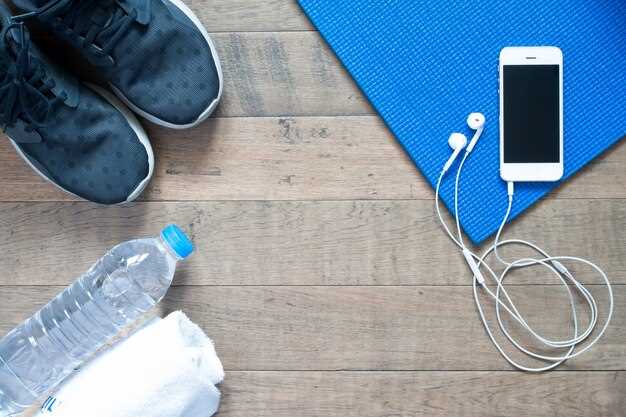
For those venturing into the exhilarating world of track days, having the right gear is essential for both safety and performance. As a beginner, it can be overwhelming to determine what equipment is necessary, especially with the multitude of options available in the market. This guide aims to simplify your decision-making process by highlighting the fundamental gear every novice should consider before hitting the track.
First and foremost, protective apparel plays a critical role in ensuring your safety. Investing in a quality racing suit, gloves, and boots is crucial as they are designed to provide protection against abrasions and heat. Look for materials that meet safety standards and offer comfort, as you will be spending extended periods in the vehicle. Additionally, a properly fitted helmet is non-negotiable; it should comply with recognized safety certifications to safeguard against head injuries during potential accidents.
Another important component of your setup is the track-ready bike or car modifications. While beginners might be tempted to hit the track with a stock vehicle, certain enhancements can significantly improve performance and safety. Consider upgrading your tires to ones that are suitable for racing conditions, as well as ensuring your brakes are in prime condition. This way, you can focus on honing your skills rather than worrying about mechanical limitations.
Finally, don’t overlook the importance of personal items such as hydration packs, basic tools, and a comfortable chair for downtime between sessions. Staying hydrated and prepared will enhance your overall experience, allowing you to maximize your track day. By equipping yourself with these essential items, you will be setting the stage for an enjoyable and safe introduction to the exciting world of motorsports.
Choosing the Right Helmet for Safety and Comfort

Selecting the appropriate helmet is crucial for ensuring both safety and comfort during track days. A high-quality helmet not only protects your head from impacts but also enhances your overall racing experience.
When choosing a helmet, consider the following factors:
Safety Standards: Ensure the helmet meets recognized safety standards such as DOT, ECE, or Snell. These certifications indicate that the helmet has undergone rigorous testing for impact resistance and overall performance. Never compromise on safety; a helmet with the appropriate certifications provides reassurance during high-speed activities.
Fit and Sizing: A helmet should fit snugly without being uncomfortable. Measure your head circumference to find the right size and try on different models. Check for even pressure around your head, and make sure there are no gaps. A well-fitted helmet minimizes movement during impact and reduces the chances of injury.
Weight: Lightweight helmets reduce fatigue during long track sessions. Materials such as fiberglass, carbon fiber, and Kevlar contribute to a lighter design without sacrificing safety. A heavier helmet can be burdensome and affect your concentration while driving.
Comfort and Padding: Look for helmets with adequate padding, as this offers comfort and helps absorb shock during a crash. Many helmets come with removable and washable liners, which enhance hygiene and comfort in warmer conditions. Ventilation systems are also crucial; ensure your helmet includes sufficient airflow to keep you cool on hot days.
Visibility: Opt for a helmet with a wide visor for enhanced peripheral vision. This allows for better awareness on the track. Anti-fogging treatments on the visor are also beneficial to maintain clear visibility in varying weather conditions.
Design and Features: Consider the design preferences and additional features such as integrated communication systems or sun visors. While aesthetics matter, prioritize functionality and ease of use when selecting your helmet.
In summary, the right helmet combines safety, comfort, and functionality. By carefully evaluating the factors mentioned above, you can ensure a secure and enjoyable track day experience.
Selecting Suitable Clothing and Footwear for Track Days

Choosing the right clothing and footwear is crucial for anyone participating in a track day. Safety and comfort should be your top priorities, as the right gear can enhance your performance and protect you in the event of an accident.
Clothing:
Opt for a snug-fitting, moisture-wicking base layer. This type of fabric will help regulate your body temperature, keep you dry, and provide comfort throughout the day. Avoid loose clothing, as it can interfere with your ability to control the vehicle and may pose a safety risk.
Wear a long-sleeved shirt and long pants made of durable materials, such as cotton or a cotton blend. These materials provide a level of protection from heat and abrasions. Specialized racing suits are highly recommended, as they offer enhanced safety features like fire resistance, but they are not mandatory for beginners.
Layering is essential, as temperatures can vary throughout the day. Consider a lightweight, breathable jacket that can easily be removed if it gets too warm.
Footwear:
Footwear should be specifically designed for driving. Choose shoes that have a thin sole for better pedal feel and grip. Driving shoes or motorsport-specific sneakers are ideal options, as they provide the necessary support while maximizing sensitivity to the pedals.
Avoid heavy boots or sneakers with thick soles, as they can hinder your ability to operate the controls effectively. Ensure your footwear is comfortable, and won’t cause discomfort or distraction during your time on the track.
In summary, invest in proper attire that ensures protection, comfort, and functionality. Prioritize a well-fitted moisture-wicking base layer, durable long pants, and specialized driving shoes to make your track day experience not only enjoyable but also safe.
Understanding the Importance of Vehicle Preparation and Maintenance
Proper vehicle preparation and maintenance are crucial for a successful track day experience. A well-maintained car not only performs better but also enhances safety, allowing drivers to focus on their performance rather than worrying about potential mechanical issues.
Firstly, conducting a thorough pre-track inspection is essential. Check the tire condition and pressure, as they significantly influence grip and handling. Tires should be in good condition with adequate tread depth, and the pressure must be set according to manufacturer recommendations or your specific track requirements.
Next, brakes play a fundamental role in performance and safety. Ensure that brake pads and rotors are not worn out, as overheating can lead to brake fade, compromising stopping power. It’s advisable to use pads designed for track use, as they typically handle higher temperatures better than standard options.
Fluid levels should also be closely monitored. This includes engine oil, coolant, brake fluid, and transmission fluid. Fresh fluids help maintain optimal performance and prevent overheating or mechanical failures during the event. Flushing and replacing fluids as needed prior to a track day is a good practice.
In addition to mechanical checks, ensure that all safety equipment, such as seat belts, harnesses, and helmets, are in good condition and correctly installed. This not only ensures compliance with track day regulations but also protects the driver in case of an incident.
Finally, consider the overall mechanical condition of your vehicle. It may be wise to have a professional inspection, especially if you’re new to track days. Addressing any existing issues will prevent potential breakdowns and enhance the enjoyment of the experience.
In summary, thorough vehicle preparation and ongoing maintenance are the backbone of a successful track day. Investing time and effort in these areas ensures not only better performance but also a safer and more enjoyable driving experience.